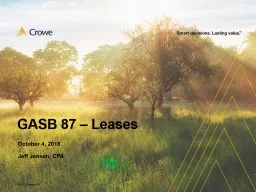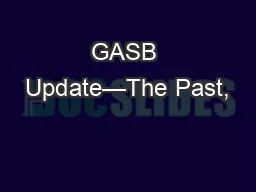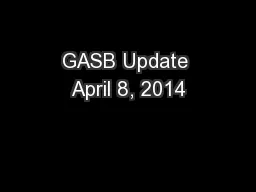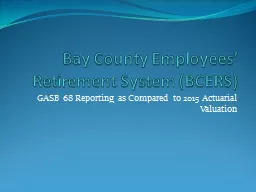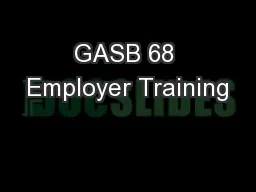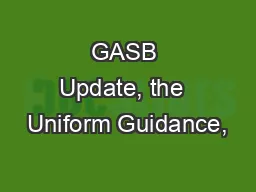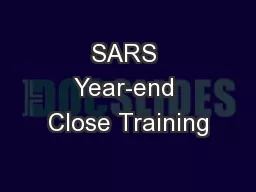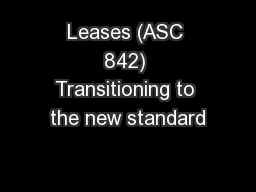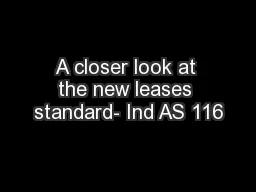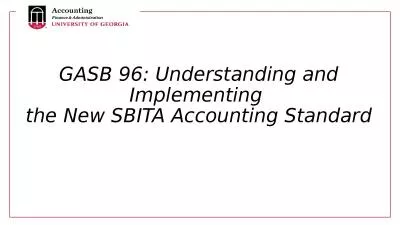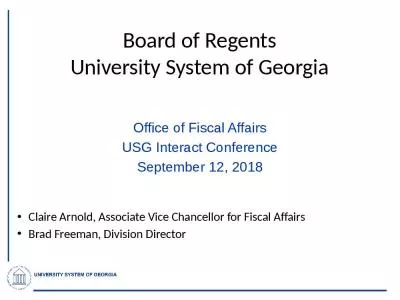PPT-GASB 87 – Leases October 4, 2018
Author : tawny-fly | Published Date : 2018-11-14
Jeff Jensen CPA 2017 Crowe LLP Polling Question 1 Which of the following best describes your experience related to GASB 87 I have read through GASB 87 and have
Presentation Embed Code
Download Presentation
Download Presentation The PPT/PDF document "GASB 87 – Leases October 4, 2018" is the property of its rightful owner. Permission is granted to download and print the materials on this website for personal, non-commercial use only, and to display it on your personal computer provided you do not modify the materials and that you retain all copyright notices contained in the materials. By downloading content from our website, you accept the terms of this agreement.
GASB 87 – Leases October 4, 2018: Transcript
Download Rules Of Document
"GASB 87 – Leases October 4, 2018"The content belongs to its owner. You may download and print it for personal use, without modification, and keep all copyright notices. By downloading, you agree to these terms.
Related Documents

